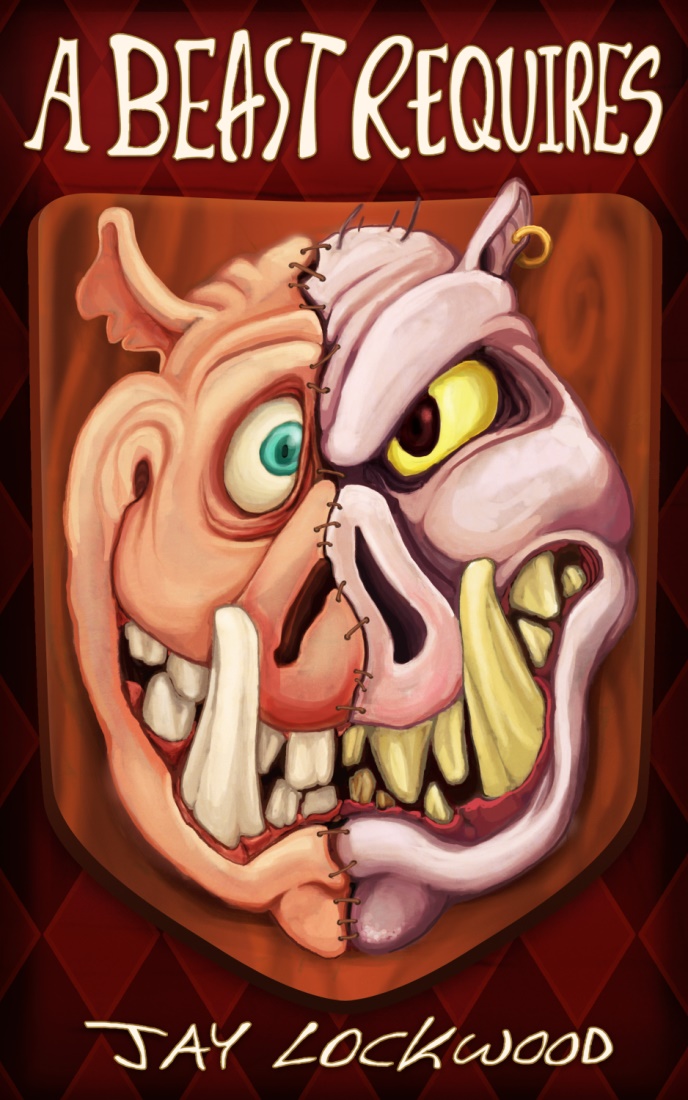Welcome back to World Builders, with another peek behind the world building process of a fantasy writer — Jay Lockwood.
 Dyslexic. Queer. Nerd. Writer. A former retail manager and convention organizer, JAY LOCKWOOD aspires to live a stress free existence. His deep love of storytelling has prevented this endeavor, and he battles word counts alongside D20’s and dragons. He lives in Kent, Ohio, and is owned by three cats.
Dyslexic. Queer. Nerd. Writer. A former retail manager and convention organizer, JAY LOCKWOOD aspires to live a stress free existence. His deep love of storytelling has prevented this endeavor, and he battles word counts alongside D20’s and dragons. He lives in Kent, Ohio, and is owned by three cats.
All right, time to dig in. Here are Jay’s answers to some of my world building questions.
What aspects of the world do you have to figure out before you start a story? What do you allow to unfold as you write?
When crafting a world from scratch, I begin by asking myself, “What do they eat?” Food, and how it is gathered, processed, and consumed, is the foundation civilizations are built upon. What they gather creates the surrounding landscape. How they prepare and consume it sets their level of advancement and social dynamics. Do they eat seafood? Are they near a body of water, or is it packed in salt and shipped? If they are by water, do they fish for their own sustenance, or have they developed it into an industry? As these questions are answered, the plate fills and the world takes shape.
With A Beast Requires, I wanted the city of Aurum to be a gargantuan metropolis. Figuring out how the city was able to feed itself became a game of culinary connect the dots. In its history, Aurum consumed the neighboring towns and villages, assimilating these food cultures into its own. To prevent starvation, the citizens needed to come up with new ways of production. With space limited, crop and livestock cultivation took to the city’s rooftops. Trade is the lifeblood of the city, bringing new ideas alongside exotic flavors and spices. This is where I began writing, knowing who they were by what they ate. I knew the ingredients. I could see the meal, and everything else unfolded with each improvised course.
What do you enjoy the most about world building?
I’m a humorist at heart, so I love creating anachronistic or magical parallels to modern day within a fantasy setting. Even the absurd needs to make sense in some small way. Take the delivery of hot and cold water, without the aid of plumbing. Sure, they could fill a tub with buckets and heat it over a flame, but what if they lived on the eighth floor of a tenement? That’s a lot of work, and not a convincing selling point for the landlord. Now a bucket and pulley system drawing water from hot and cold running pools? That’s a selling point for an industrious landlord. I thrive on that level of creative problem solving, and it adds to the whimsical nature of my settings.
How do you balance realism with magic or other world building elements that allow for departure from the ordinary?
For me, realism comes from how the characters interact with the fantastical elements. They set the tone for how society deals with it, giving the reader a sense of how ordinary or extraordinary these elements actually are. I have a world where magic is extremely common, where anyone can practice it with enough understanding. The thing is, once you learn how magic shreds and reassembles the nature of reality, no one in their right mind would be stupid enough to screw around with it. People are sensible creatures, especially when their own self-preservation is on the line. It is with that type of reaction that I think the balance is struck.
What are some fundamental rules to world building you would say are important to every writer in the fantasy genre?
In A Slip of the Keyboard, Terry Pratchett wrote, “Apply logic to places it wasn’t intended to exist.” It’s not just about having that cool or neat thing. As a writer, you need to understand why it exists, how it manifests, and what people do when confronted with it. In order to create a convincible world, writers have to know how everything in that world works. Once you’ve established that, ask yourself, “Does this apply to the story I am trying to tell? Is this relevant?” If it is, then you have the entire book to play around with it.
In your opinion, what is it that makes a believable and immersive world for a fantasy story?
It’s the mundane nuances that allow you to get lost in a good story. When small details are peppered throughout a scene, they shed a glimpse on how the world operates. When those small details are unexpected twists of reality, it fuels our imagination. We know what an elephant is, and it comes with a certain expectation. Shrink that elephant down to the size of a mouse, give it six eyes and four tusks, or have it travel the universe on the back of giant, space turtle, and we begin to crave more. The important thing is to not go super crazy on the details. The more you add, the more it takes away from what makes your setting amazing.
Thanks, Jay, for sharing your insights on world building!
Be sure to check out Jay’s book:
 When conspiracies threaten to plunge Aurum into civil war, the city’s only hope is Deputy Constable Albicon Pine. Unfortunately, it’s his first week on the job.
When conspiracies threaten to plunge Aurum into civil war, the city’s only hope is Deputy Constable Albicon Pine. Unfortunately, it’s his first week on the job.
“A Beast Requires mixes the wit of Douglas Adams and the whimsy of Jasper Fforde in a fairy tale land of forest slums, skeevy elf landlords, and murder. Every moment is layered in world building gold. If this book were food, it would be chocolate and I would eat it. (I may eat it anyway.)” – A.C. Weston, author of She is the End
Here is an excerpt:
The fields of Aurum were alive with Albicon’s screaming. The situation was dire. Praying to whatever gods would have him, he held on for dear life. The journey from Fair Fields took twelve hours. Mr. Schaw, the only merchant desperate and drunk enough to travel so early in the season, made it in three. Strapped to the back of a wagon between barrels of apples and cider, Albicon’s error in judgement was apparent.
He had opened his eyes.
If you enjoyed what you read here and would like to help bring this book to life, please go over to Inkshares consider supporting it by pre-ordering a copy.
Inkshares is a crowdfunding publisher who chooses which books to publish based on whether enough readers have shown interest in them. Successful projects have been reviewed in the NYT, US Today, and Washington Post, and have been distributed to numerous bookstores including Indigo and Barnes & Noble.
You can also connected with Jay in the following places:
Twitter: @EremiticFool
Facebook: https://www.facebook.com/abeastrequires

